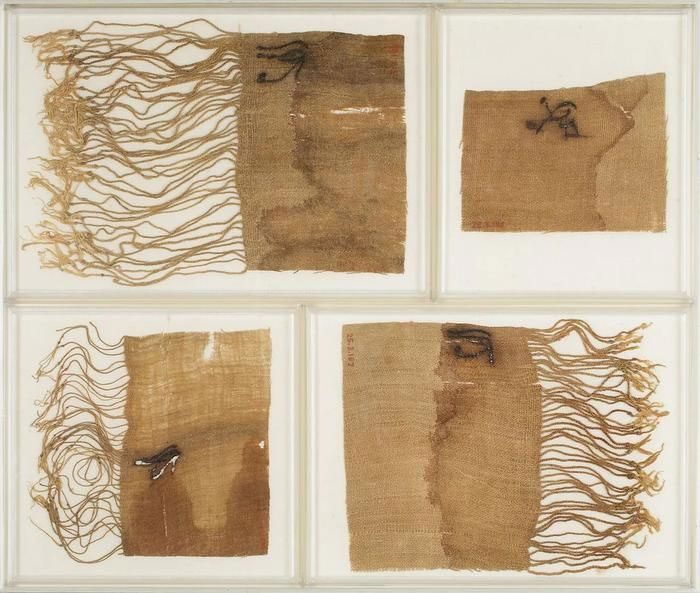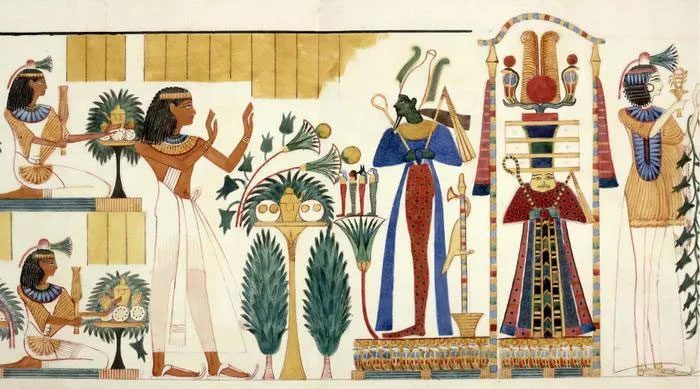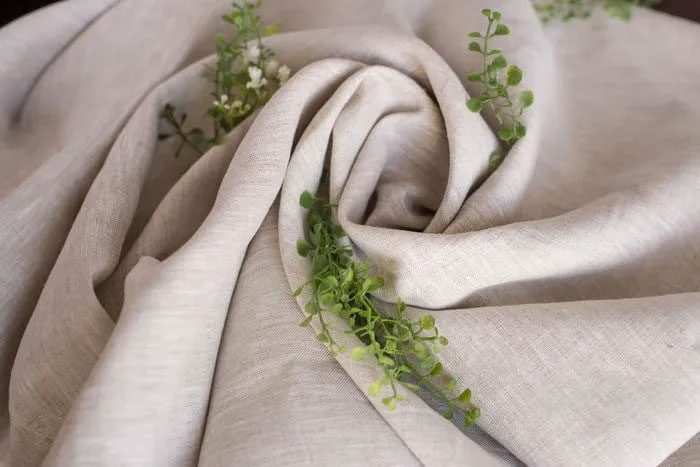Today, linen clothing is very popular and affordable. However, in the past, it was considered a noble material, playing a crucial role in many cultures.
Linen in Ancient Times
Linen is the first woven fabric produced by humans. The oldest pieces of linen were found in prehistoric caves in the Caucasus and are estimated to be 38,000 years old.

Linen is a woven fabric used for everything, from everyday clothing to mummification wrappings…
Fast forward to Ancient Egypt around 5,000 BC – the Egyptians lived in a barter economy, exchanging goods of equivalent value instead of using money. Linen was used for everything, from daily garments to mummification wrappings, making it a fundamental part of this economy. With its absorbent and heat-conducting properties, linen was an ideal material for the hot climate of Egypt. Even today, linen used in Egyptian tombs remains well-preserved, providing further evidence of this ancient civilization. The use of color fixatives (dye-binding chemicals) was not present in Egypt at this time, so their linen garments were typically left in their natural color or bleached.

Linen is an ideal material for the hot climate of Egypt. (Illustrative image).
The use of linen clothing was adopted by many other ancient Mediterranean civilizations. The Romans named the flax plant “linum usitatissimum” or “the most useful flax”.
Two thousand years later, the popularity of linen spread globally. The ancient Phoenicians exported linen fibers to Scotland, Persia, India, and China. In the colder regions of Europe, linen was used to make shirts and undergarments beneath woolen outerwear. In fact, the term linen is derived from the words “lining” and “lingerie.”
Linen and Religion
The practice of wearing linen embodies purity in many cultures. The ancient Egyptians believed that the gods were clothed in linen before they descended to earth. In “Moralia,” the Greek philosopher Plutarch explained why priests preferred to wear linen instead of wool: “After shaving off the hair to remove impurities, it would be ridiculous for these individuals to wear the fur of domesticated animals. Flax produces fiber from the earth, is immortal, provides us with edible seeds, and gives us neat and clean clothing. It is not as heavy as fabrics designed for warmth. It suits all seasons of the year.”
Linen as the First Composite Material

The breastplate of Alexander the Great was made from composite linen.
Linen is not only the first woven fabric but also played a role in the production of the first composite material – the breastplate made from multiple layers of linen that Alexander the Great wore while conquering territories in the Mediterranean and Asia. However, the mythological Greek hero Ajax is also described as wearing a composite linen breastplate in the “Iliad.” This story was written 400 years prior, suggesting that this material had been in use for centuries.
Linen in the Middle Ages
The production of linen became a household task in 789 when King Charlemagne of France decreed that all households must grow flax and weave their own linen. This tradition persisted until the 18th century, with items such as clothing, bed linens, and domestic textiles being produced at home.
In the subsequent centuries, linen became foundational to many of our greatest works of art. The 11th-century Bayeux Tapestry, depicting William the Conqueror seizing the crown from King Harold of England, was made from 70 meters of linen. By the early 16th century, Flemish painter Peter Paul Rubens inspired many European artists to shift from using wooden panels to linen, a technique that remains popular today.

Linen production became a household task in 789, with many families growing flax and weaving linen in France. (Illustrative image).
The Linen Belt of Europe: Netherlands, France, Belgium
In the first half of the 17th century, the town of Haarlem in the Netherlands became a major center for linen production. The town benefited from the migration of skilled linen weavers from southern Netherlands during the Dutch Revolt. Merchants from other parts of Europe also sent linen products to Haarlem for bleaching and finishing – a process immortalized by a series of paintings of the bleaching fields in Haarlem by Jacob van Ruisdael. This industry declined by the end of the 17th century as manufacturers sought to cut costs by moving production processes to rural areas.
In France during the 16th century, linen artisans created many beautiful garments for the French nobility, but by the 17th century, these artisans were largely exiled. The reason was that King Louis XIV banned Protestants in France. The artisans migrated to Germany and Northern Europe.
With the decline of the linen industry in the Netherlands and France, a new player emerged on the map – the Flanders region of Belgium, particularly the town of Tielt. Although Julius Caesar noted the superb quality of Flemish linen as early as 100 BC, it was not until the 18th century that it was truly valued. By 1840, 71% of households around Tielt were involved in linen production.

Linen production became much easier and cheaper with the advent of the linen spinning machine.
The Decline of the Linen Industry
The production of linen became much easier and cheaper when Philippe de Girard developed the linen spinning machine in 1810 – marking the beginning of the Industrial Revolution. However, this also marked the start of the decline of the “giant” linen. Cotton, being less durable than linen, but easier and cheaper to produce on a large scale, became the preferred fabric in the industrial age. From the 1850s onward, the European linen industry fell into decline.
However, linen continued to be widely used, especially during World War I and II. It was used to make ropes, tarpaulins, and items requiring strength and durability. The German army cut off the supply of linen from Europe, prompting lands in Ireland and Australia to turn to flax cultivation. Most of these lands were farmed by women.
Linen in Modern Times
Today, nearly 2,000 years after Plutarch praised the purity of linen, it has once again become the “darling” of the fashion industry due to its environmental friendliness. The rise of responsible consumerism has led many to be concerned about cheap synthetic and cotton clothing – items that are causing significant harm to the earth. Interior trends are also gradually changing to reflect more ethical consumption patterns. Inflatable plastic chairs and lava lamps from the 1990s are no longer in favor, replaced by the rise of durable wooden furniture and natural textiles like organic linen. The sustainable, strong, and durable qualities of linen have been proven over centuries, so it is no surprise that it remains a favorite material among people.


















































